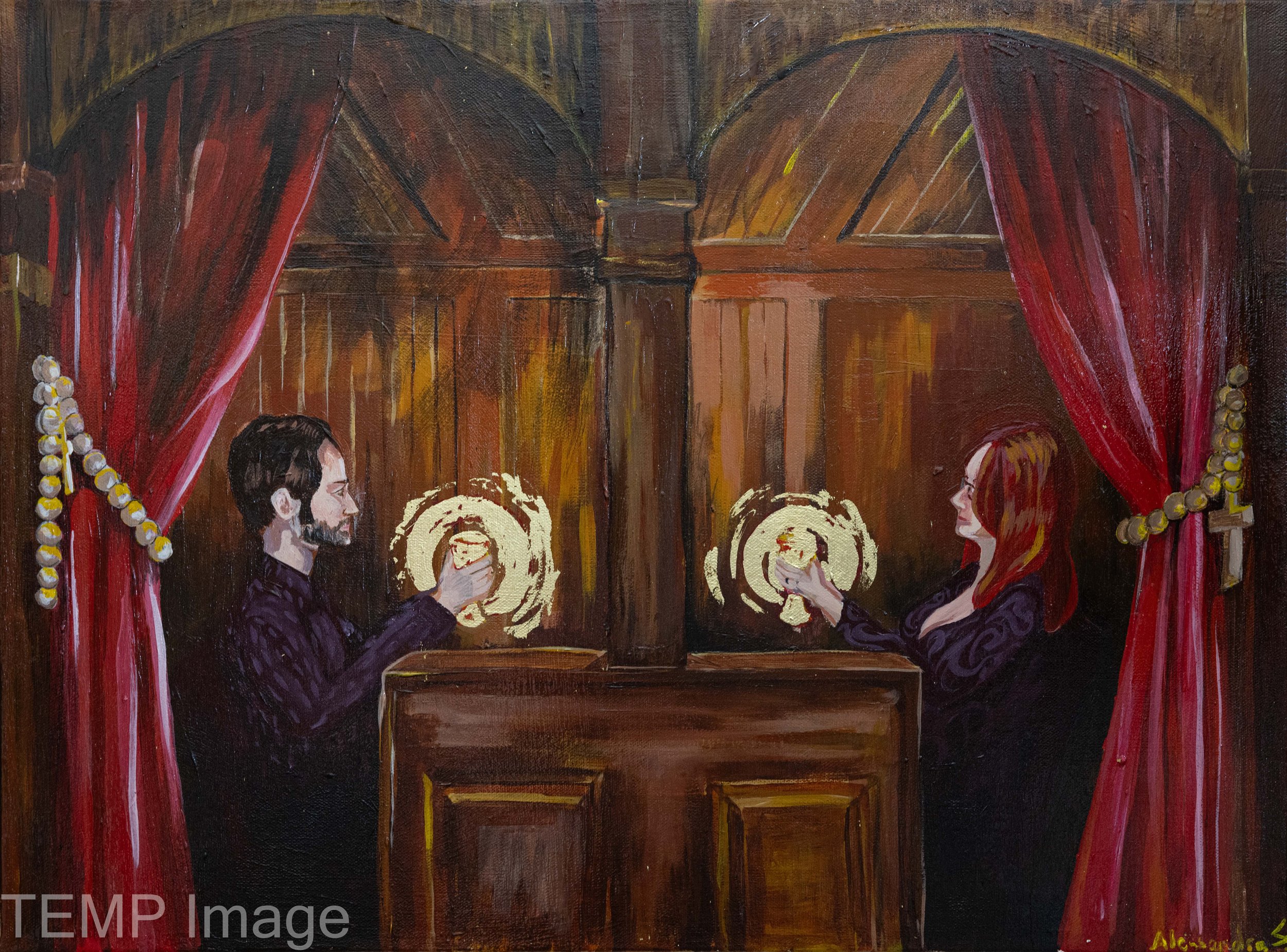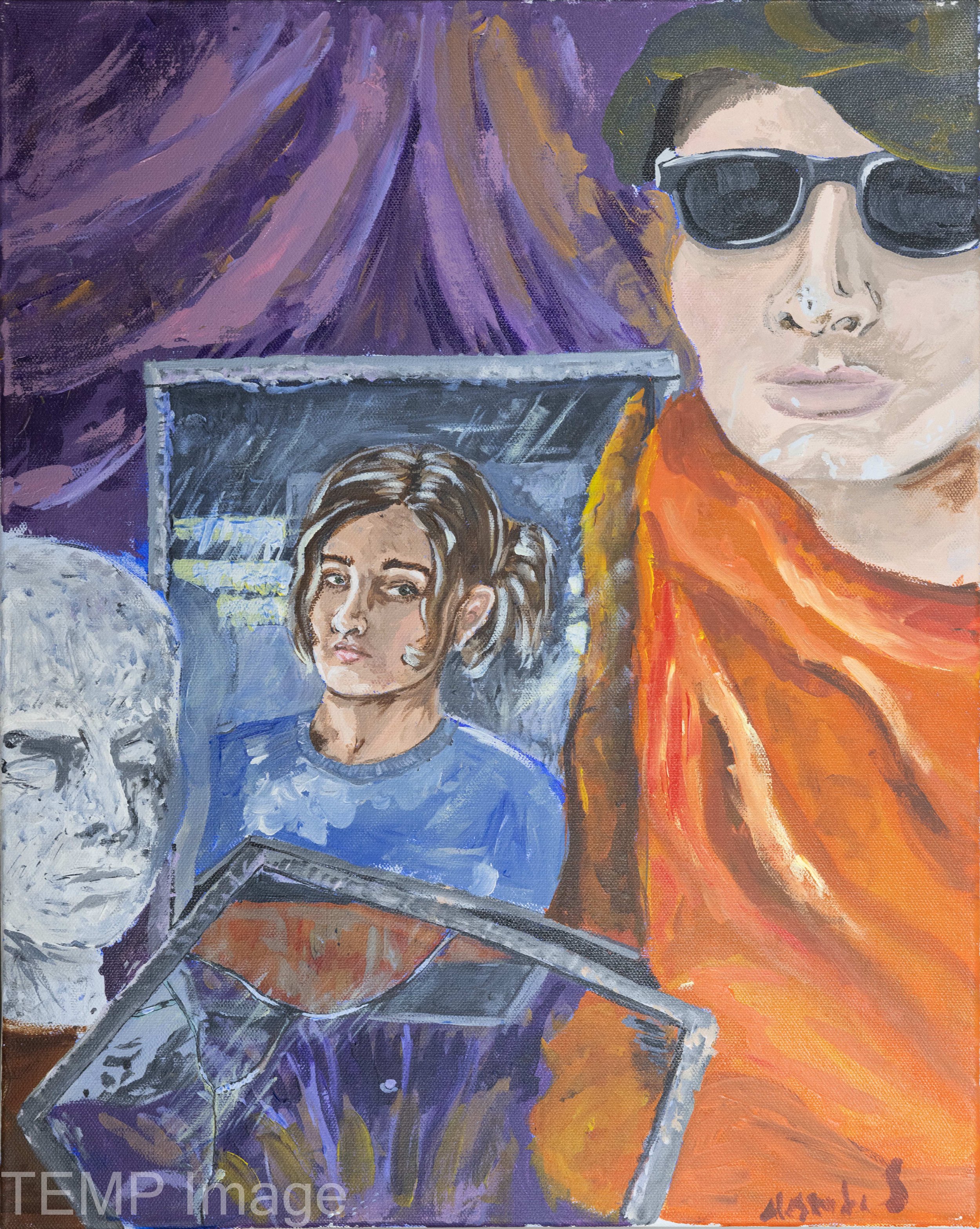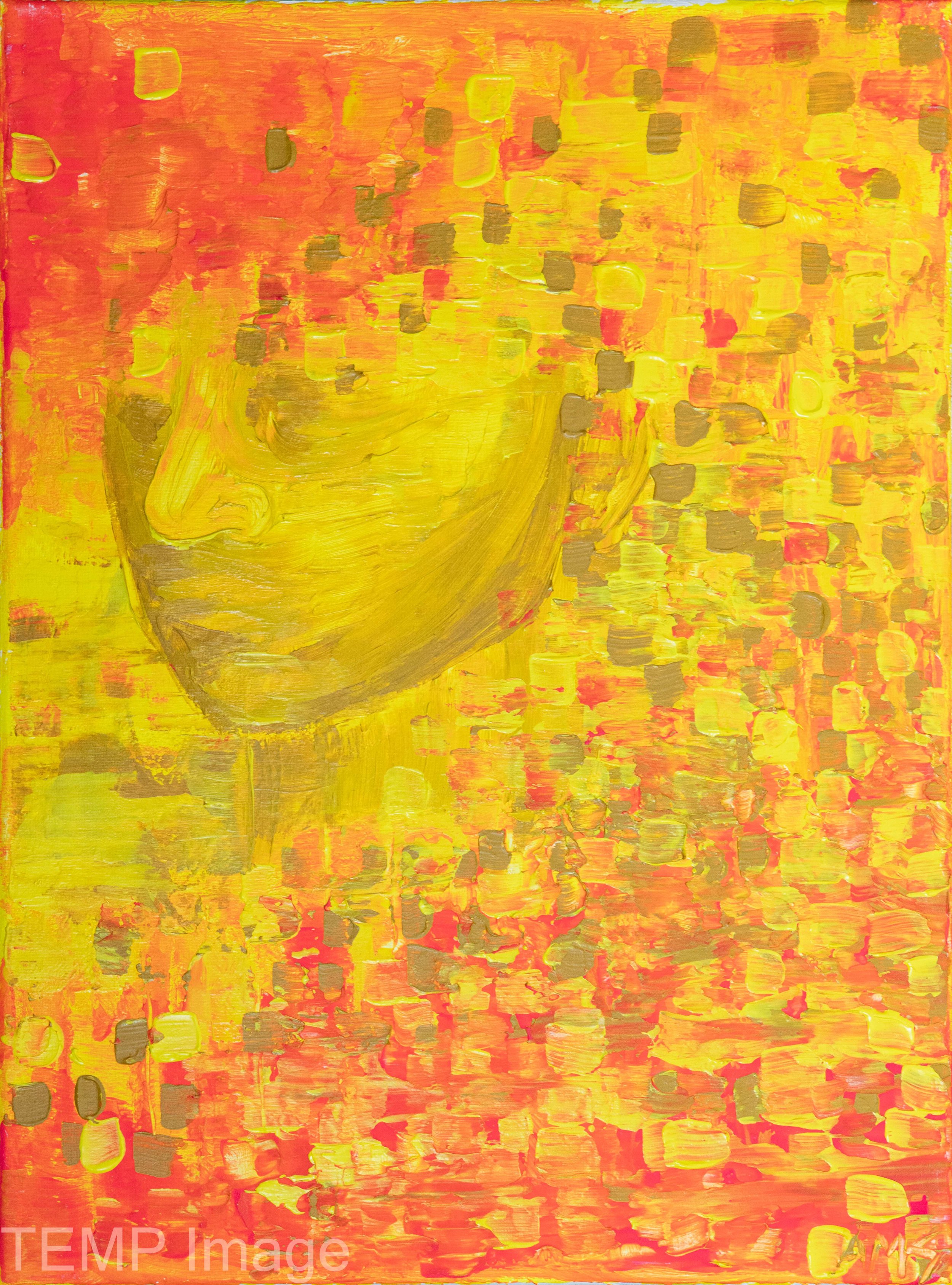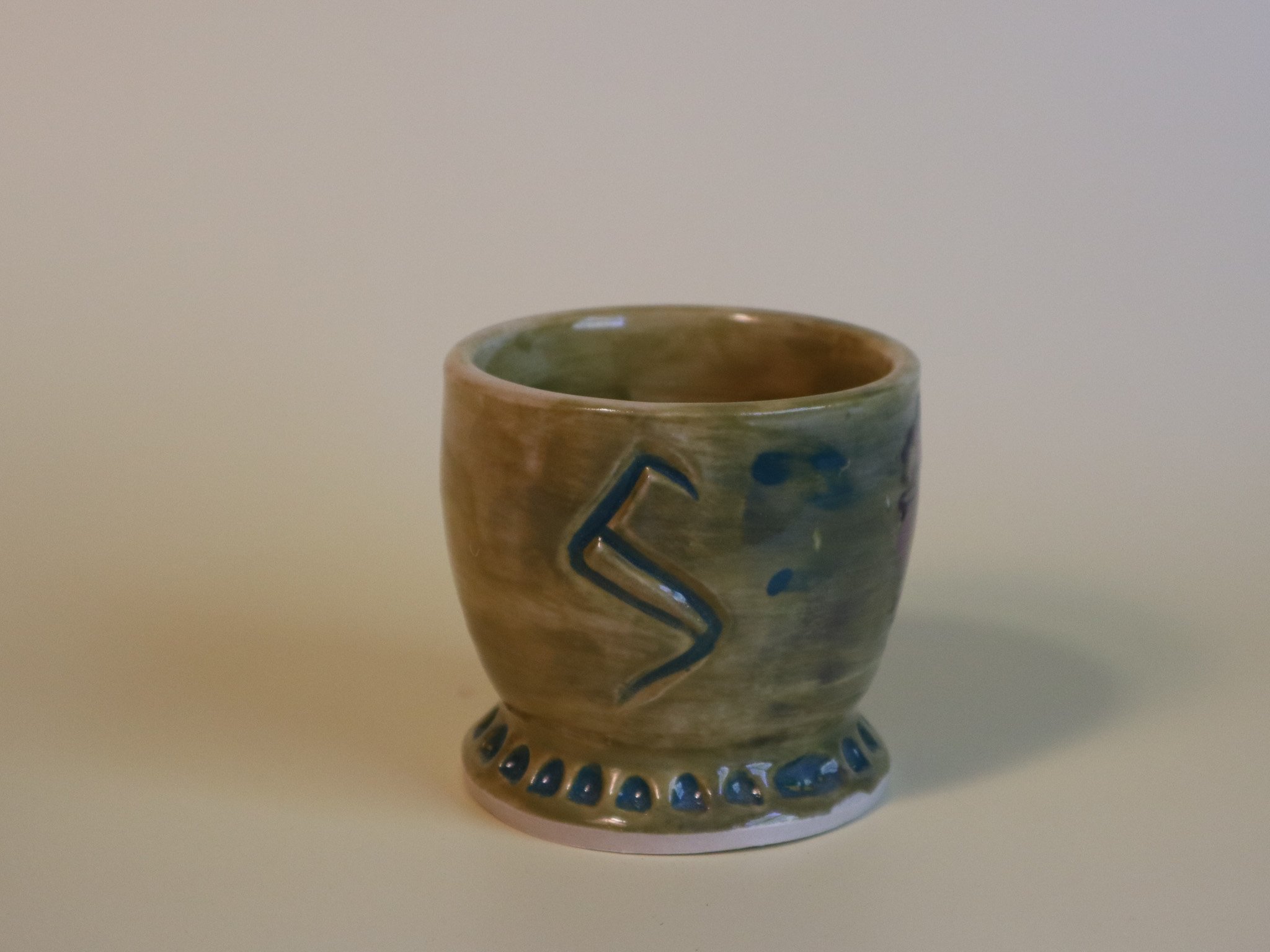I’m Alessandra and this is my art :)
Ceramics are functional works of joy! Throw, coil, slab, or pinch– I explore rough, beautiful, and silly ways clay can take shape :)
Squiggleware– Turquoise Inlay Edition
At first, I started with a few mugs. My goal was to keep making mugs until they no longer brought me anguish. What seems like the simplest form is riddled with ergonomic quirks one doesn’t notice until they hold a mug that just feels… wrong. A mug must have walls and a bottom that aren’t too thick and aren’t too thin. A mug handle must complement the weightiness (of lack thereof) of the vessel it adheres to, plus it must have contours to go along. Finally, controlling the moisture levels within the clay from mug body to mug handle takes finessing and patience I didn’t know I possessed– especially in the dry climate I inhabit. These things aside, I am an artist. I could not be satisfied creating all these things without adding more of my personal touch, so Squiggleware was born!















Squiggleware– Wall Plates
Some ceramicists might argue that throwing a plate on a wheel is a waste of clay, but I love the guaranteed symmetry of the method and find a round plate the most enticing form to start with. Perhaps my background in visual arts predisposes me to creating surfaces with which I can impose my vision.
Inspired by decorative plates part of fine china sets, I set out to create a whimsical version of the home decor trend using freeform carving and colorful underglazes.





Smile Pots
What started as a silly afternoon coil pot at a community clay event soon turned into an obsession. I was originally inspired by the rough-hewn, joyous creations of children around me at said event. I wondered what a kid might create and how I could carry that into adulthood: something happy, something bumpy, something uneven, yet still laced with enough craftsmanship to show growth.
It did not take long for the coiled pots to get out of hand, but the amount and variety lends to the pots’ collective splendor– so I persist.










Raku
There are two major types of raku ware: traditional Japanese raku that is characterized by hand-formed chawan and removed from a low-temp kiln to cool exposed to the elements, and western raku that is formed of any method and removed from a high temp kiln (still hot) to be submerged in carbon-rich materials for unpredictable effects. I participated in the latter raku method! Knowing ahead of time that none of my raku pieces would be food-safe, I opted for decorative pottery. I started with two different colored clay bodies, marbling some together and keeping the colors totally separate in others. In order to see some of the clay marbling after firing, I used a wax-resist where I didn’t want glaze or heavy blackening to occur. Thankfully, it allowed some of the marbling to show through.
Raku firing can be tough on materials, going from extreme hot to extreme cold so quickly, so I mentally prepared myself to lose a few things. Unfortunately, the day of firing it was frigid and wet! The added stress of a greater temperature change did crack some of the pieces once they emerged. Rather than toss my work, I decided to put them back together with epoxy and copper foil! Serendipitously, I am more fond of them after their break and repair than when they were whole.








The Work, Cont.
Paintings
I paint for love, whether that is love for the practice, the acrylic medium, the subject, or the recipient. My brushstrokes are heavily guided by the textural nature of acrylic and how it leaves a gesture across the canvas, which I accent with metal leaf.



















































